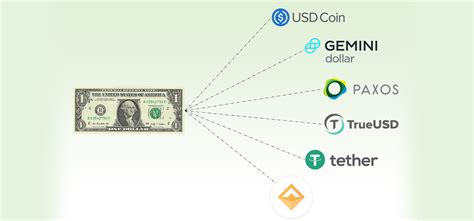Fiat vs. StableCoins: Understanding the differences
The world of cryptocurrency was dominated by two main types of digital currencies: Fiat and StableCoins. While both offer potential for high returns, they differ significantly in their underlying principles, risks and applications.
What is Fiat?
The Fiat currency, also referred to as paper money or physical currency, is issued and regulated by the governments. It is the standard unit of Exchange that is used worldwide and is supported by the central bank of a nation. Fiat currencies are subject to money policy decisions of governments and can be exchanged for a fixed sentence for other Fiat currencies.
What is StableCoin?
A stable coin, on the other hand, is a kind of digital currency that corresponds to a traditional currency or goods such as the US dollar (USD). Stable coins aim to maintain the value stability of the value by using an underlying asset such as gold or Fiat currency as collateral. This means that when buying a stable coin, you essentially buy a small part of this financial value.
Key differences:
- Backing : Fiat currencies are secured by the governments, while stable coins have no inherent support and rely on the value of their underlying assets.
- offer : The Fiat currency is issued in unlimited quantities, while stable coins only has a limited offer and is often created to satisfy the demand for new coins or the incentive of adoption.
- Regulatory environment : Fiat currencies are regulated by central banks and government agencies, while stable coins are active as part of the underlying authority.
- Risk : Fiat currencies form inherent risks related to inflation, currency fluctuations and financial crises. Stable coins, on the other hand, should alleviate these risks using a confiscated asset.
Why use Fiat?
Fiat currencies have been around for centuries and offer several advantages:
- Width acceptance : Fiat currencies are widely accepted as a form of payment across borders.
- Central banking regulation : Fiat currencies are subject to strict monetary policy rules that contribute to maintaining economic stability.
- Investment potential : Fiat currencies can be kept as investments and offer a relatively stable value memory.
Why use stable coins?
Stable coins have gained popularity in recent years due to their unique properties:
- Low Volatility : Stable coins tend to have lower price fluctuations compared to traditional fiat currencies.
- Increased adoption : Stable coins are used by more institutions such as banks and stock exchanges that can increase demand and acceptance.
- Security options : Stable coins offer a way to secure against currency risk or inflation.
Risks related to Fiat vs. StableCoins
While both Fiat and StableCoins have their advantages, they are also associated with risks:
- Market Volatility : Both Types of Currencies are subject to market fluctuations, which can lead to price swings.
- Regulatory UncertaAnty : The regulatory Environment for Fiat and StableCoins is still evolving and can change rapidly.
- Liquidity risk : Stable coins can have liquidity problems if the demand dries out or if a sudden increase in the offer increases.
Diploma

Fiat currencies and stable coins offer different advantages and disadvantages, which makes them suitable for different applications:
- Fiat currencies are ideal for long-term systems and institutional applications in which stability and regulatory security are of crucial importance.
- Due to their low volatility and increasing acceptance, stable coins are better suited for daily trade and speculation.
A balanced approach that combines the advantages of Fiat and stable coins can ultimately offer investors a diversified portfolio and more growth opportunities.
recommendations
1.